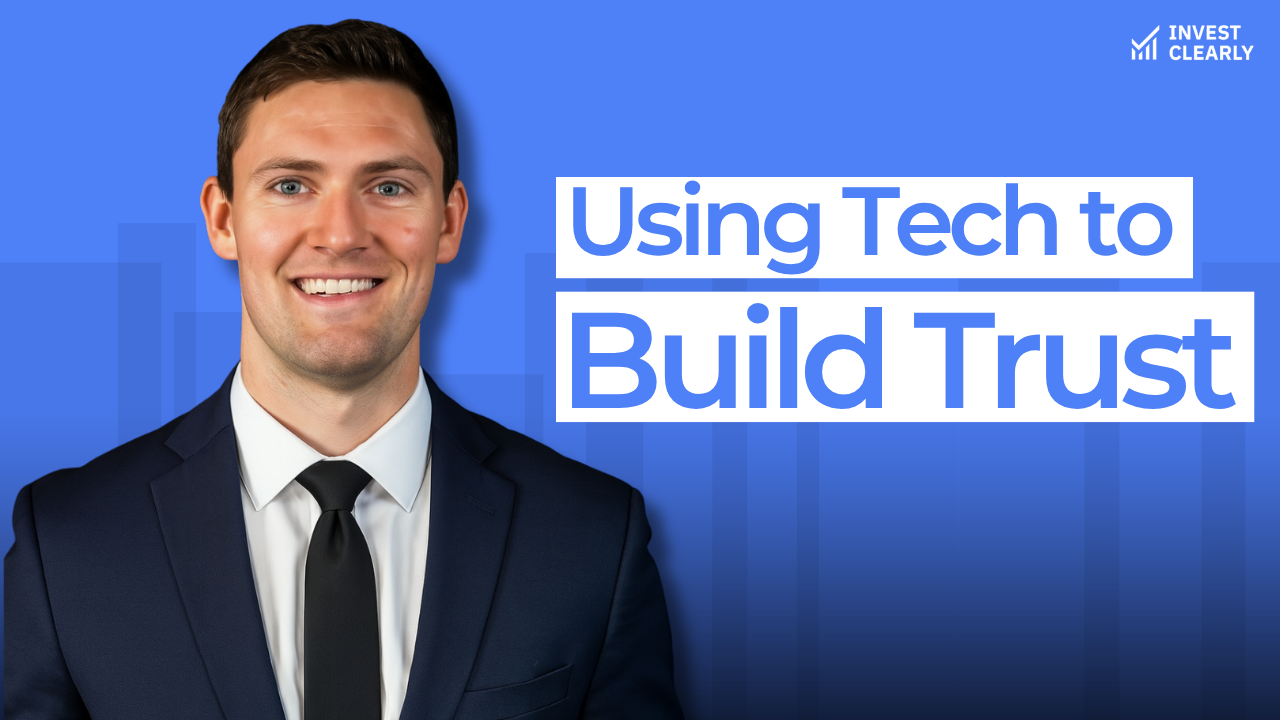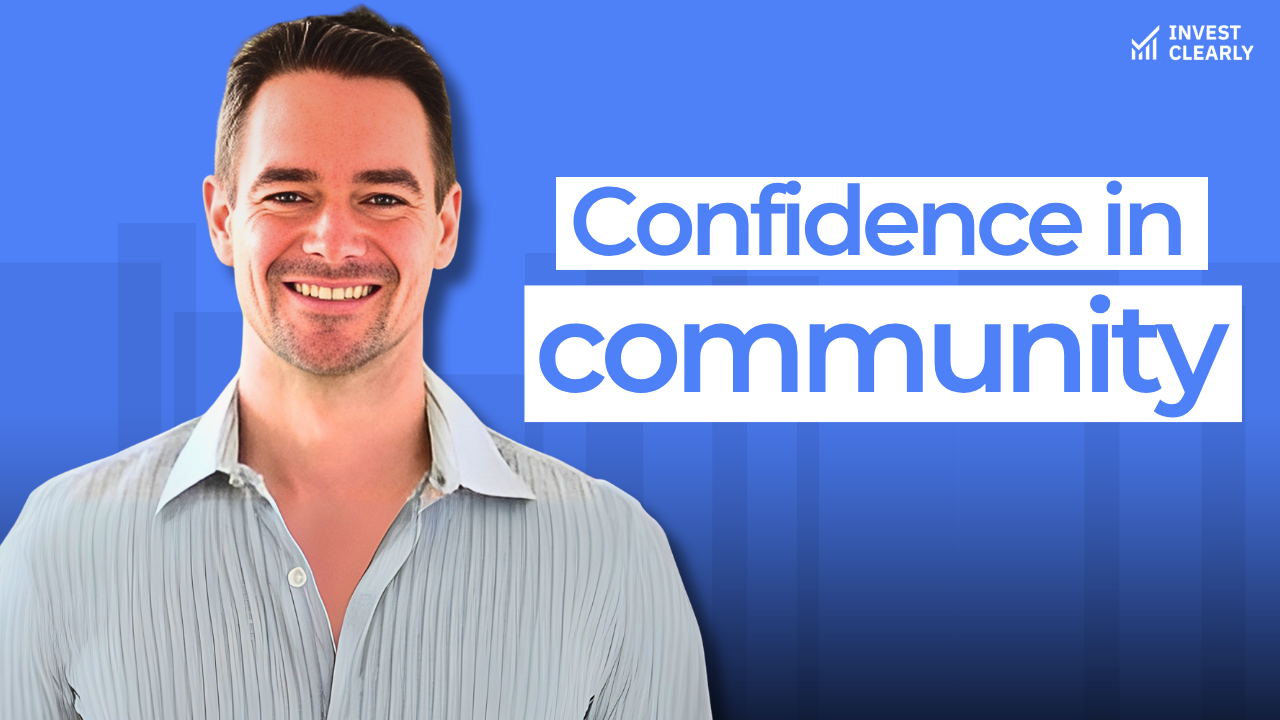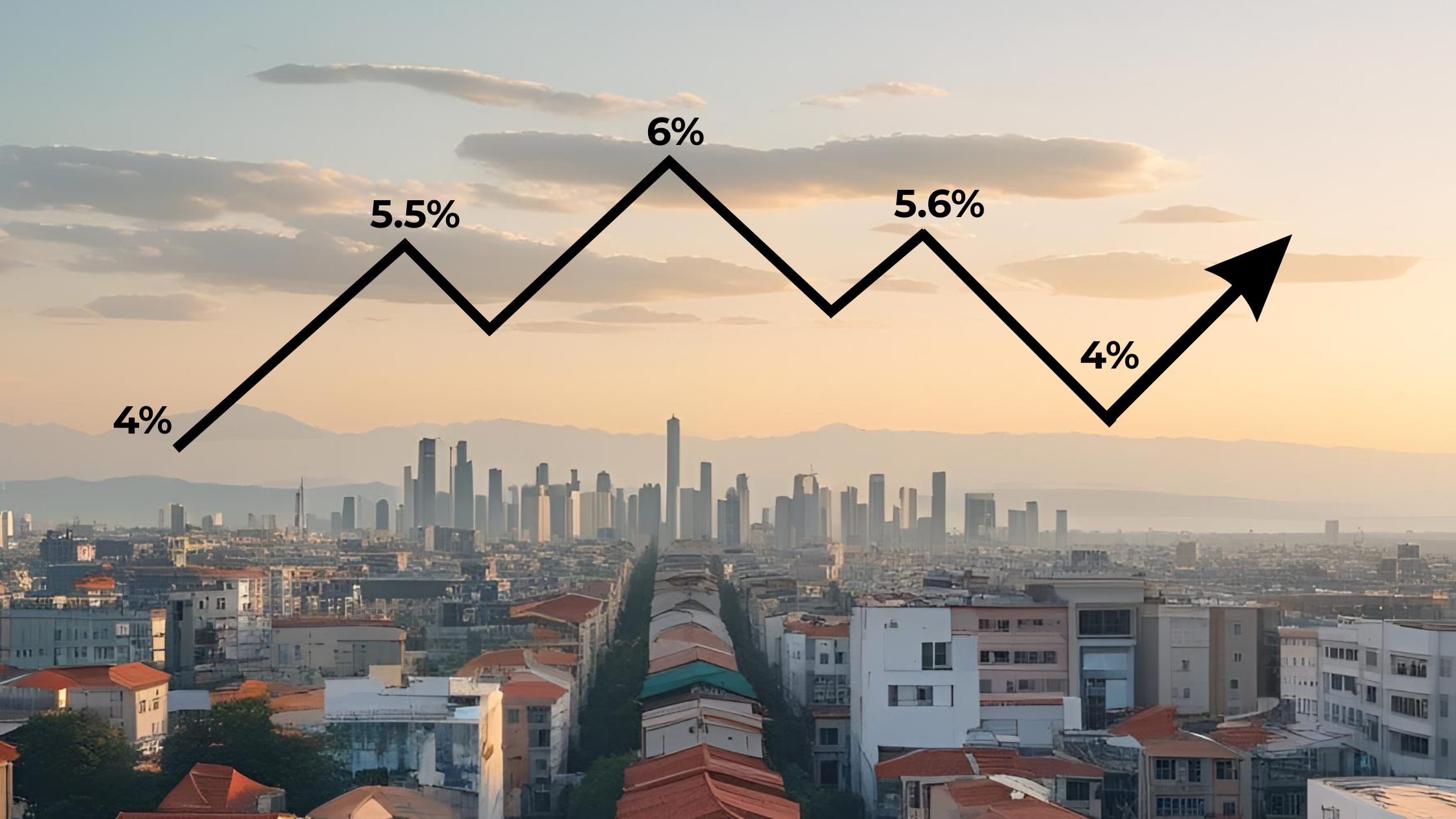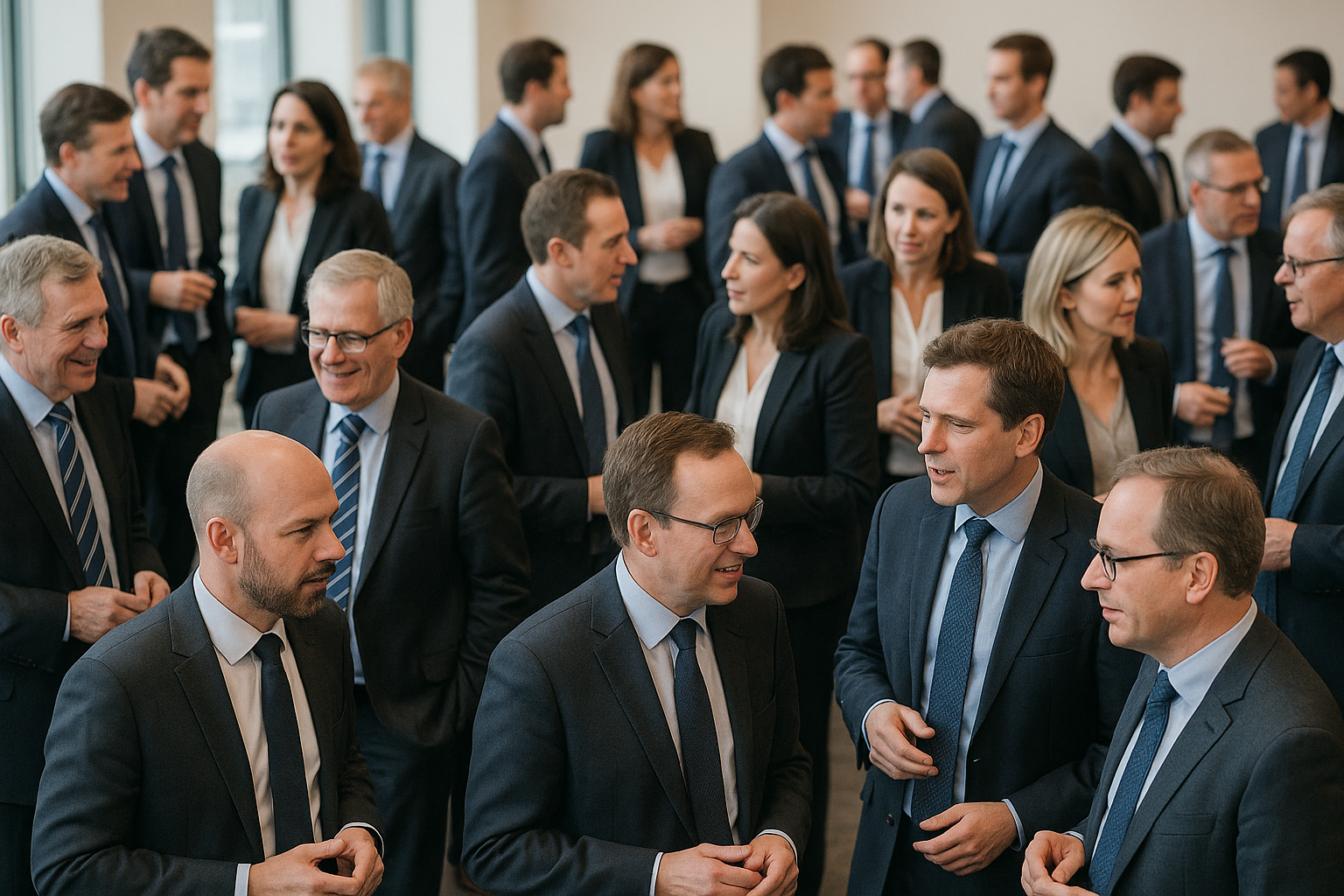
Using AI, Community, and Transparency to Build a Better Investment Firm with TJ Burns
TJ Burns, founder of Burns Capital Partners and ex-Amazon engineer, joins the Invest Clearly Podcast to break down the real challenges of raising capital and building long-term LP trust.
He shares why he left fund-of-funds behind, how he uses Discord and transparency reports to keep LPs in the loop, and how AI is reshaping underwriting and investor ops.
📌 Topics Covered:
- LPs left in the dark: why it’s so common
Building an LP-only Discord community
What AI can do for investor ops in 2025
Why he's walking away from fund-of-funds
The dark side of urgency-driven capital raising
Invest Clearly Podcast - Episode 3 Podcast Transcript
Guest: TJ Burns, Burns Capital Partners
TJ: The business of raising money isn't designed to make you wealthy or even provide an income for the first couple of years.
Pat: What are you doing to drive trust with newer investors?
TJ: It's really tough because the stuff that works isn't good for LPs. Most investments are emotion-driven, and the best marketers online know that and play to it.
Pat: The number of conversations I have with LPs who are massively invested with sponsors, have no idea about their investment performance, and can't reach their sponsor is just unnerving.
TJ: We're at a point in history where people who can adopt AI and add it to their business are going to crush their competition.
Pat: Investors and operators, welcome back to the Invest Clearly Podcast. I'm your host and CEO of Invest Clearly, Pat Zingarella.
Today we sit down with TJ Burns, a former Amazon engineer turned sponsor and founder of Burns Capital. After starting as an LP, TJ saw firsthand where investor communication and marketing fell short. Now on the GP side, he's building with transparency at the core.
We talk about systems he's created—from an LP Discord community to AI-powered underwriting—and why he's shifting from fund-to-funds to take more control. He shares his take on urgency-based marketing and what sponsors need to do to earn long-term trust.
If you're a sponsor looking to stand out by leading with transparency and tech, this one's for you.
Main Interview
Pat: TJ, thank you for joining me. Before we jump in, take about 30 seconds to introduce yourself and Burns Capital.
TJ: Thanks for having me, Pat. My background is in tech. I graduated from MIT, then went to work at a startup that got bought by Amazon. I worked in a lead engineering position for seven years while getting the entrepreneurial bug, mostly in real estate. I bought some small multifamily and single-family properties, got my realtor license, and started passively investing.
That was a really good fit because I had a demanding job in an expensive market and was looking for diversification and exposure to real estate. I wanted to learn as well. I started passively investing around 2020-2021. I did some great deals and some that didn't turn out so well.
Through that experience, I noticed things that didn't seem right in how deals were marketed and communicated. I also realized I really liked the business. I started working with an operator I trusted, and he took me under his wing as a partner. I began raising money alongside him and learning about his operation. That was my first deal raising money, back in 2022.
Since then, I've been steadily growing Burns Capital Partners. We've raised a little over $10 million to date across eight offerings. We've gotten more specialized recently, moving toward the operations side. We're doing two different types of deals—one on the multifamily side, one on the lending side.
Pat: Very nice. There are direct parallels to my background—I was at Gartner, started listening to podcasts, began actively investing in small multifamily, got my realtor's license because my wife did. When you were at Amazon, did you start raising capital while there, or were you an LP first and then left Amazon to pursue the GP path?
TJ: I actually did both. I worked at Amazon until August 2024 and started Burns Capital Partners in April 2022. So there was a little over two years of overlap, which was good for several reasons.
The business of raising money isn't designed to make you wealthy or provide income for the first couple of years. It's really a long-term business. Your investors get paid first, and the payout for people like me comes later when you perform. Especially with how we structure our deals—they're lighter on fees, particularly upfront, because we believe in what we're doing and want to capitalize before we profit.
I needed my Amazon income to support myself, and it also helped in establishing relationships. At Amazon, I was one of the few people with feet in real estate, which put me in a position to better find people who were perfect for what we were doing. Still today, many of my LPs came from Amazon relationships.
Pat: Earlier you mentioned being an LP and seeing things you didn't prefer or could have done better. Now that you're raising capital, what are a few of those things?
TJ: The industry is opaque. There's not much information out there, and what is available is sometimes sugarcoated or shown through rose-colored glasses.
I found myself in a couple of deals—classic value-add multifamily deals in the Sunbelt—where things wouldn't add up. In one deal, I got a huge distribution in month two of a value-add deal. On one hand, I thought it was great getting money back. I later realized they had over-raised for the deal and used that to fund distributions even though it was a value-add deal not actually producing cash flow yet.
Communication is another huge issue. In that same deal, communication went from monthly to quarterly, then to intermittent—maybe every six months. People are used to information coming instantly nowadays. For our deals, we do monthly reporting at minimum, even if it's lighter reporting. We want more touchpoints with our investors.
The biggest thing was that I didn't have a community of other passive investors who could tell me if these things were typical for the industry. I felt like I was on an island. We'll talk about things we now do at Burns Capital Partners with our investors to counteract that.
Pat: I'd love to chat about that. You were early and active on Invest Clearly, and that's all based around trust and transparency. You do some things differently than I've heard from others, particularly your Discord channel. You have all your investors in one place chatting, right?
TJ: That's right. It comes directly from my experience and what I heard from investors. I have one investor in a deal with a huge syndicator—hundreds of millions in assets under management—and he's written the investment off to zero because he has no idea what's going on. He wants to talk with other passive investors, but the GP won't answer him, let alone connect him with others in the same situation.
After hearing this and having that experience myself, I thought, "Why don't I set something up for my investors where they have a community if they want to engage?"
We have a Discord channel that every passive investor is invited to. They can see all the different deals we're managing and read the reports, so they know exactly what we're doing. If they don't want to talk to us directly—though we talk with our LPs all the time—some people feel positively or negatively but won't share that with you, or they don't have time.
If LPs want to connect with other LPs, they can. Many of our investors are real estate investors and business owners. They ask questions to other investors about other things in the industry. I thought it would be a net positive for LPs, especially if we were building something valuable that people would respond positively to.
I found that with passive investors, they're very lenient if you give them a base level of communication and effort. I also wanted to put myself in a position where if I ever started to slack, people could call me out on it.
Pat: It's a pretty active community without you involved, and there's actual engagement among the LPs—not just updates and thank yous.
TJ: A little bit. At its core, passive investors are busy people. Many own their own homes, maybe have side gigs, definitely have full-time jobs. Their spouses work, they have kids. Many are passively viewing the group. We definitely get questions, but we also do a good job sharing information so people know what's going on without having to ask many questions.
Pat: You mentioned leniency with communication. The number of conversations I have with LPs who are massively invested with sponsors, have no idea about their investment performance, and can't get hold of their sponsor is unnerving. People will talk about potential capital loss for a quarter of a second, then go into poor communication for a lengthy conversation. It's the narrative right now.
The industry narrative has changed. A couple years ago it was all "achieve financial freedom, retire early." Now it's "trust, transparency" in every LinkedIn post. You're driving transparency among current investors. What about with new investors? You started in 2022—that could be a narrative people latch onto. What are you doing to drive trust with newer investors?
TJ: It comes down to the transparency we've been talking about. I don't want—and don't expect—new investors who find me online to blindly trust me. I don't want that because I want these investors to make informed decisions.
My belief is that the service I offer is massively beneficial to a small group of people. I know that because it was massively beneficial to me. I'm still one of my largest LPs and will continue to be. My vision for this business would honestly be to turn it into a micro family office at some point—get very specialized and invest my money into what we're doing.
I know this is beneficial to the profile of person I was—that tech employee or any W2 employee who's super busy, wants to diversify, but has no time. My goal is to provide as much content as possible on what we're doing and our story so those people can make decisions for themselves.
That's over any medium. If they want to talk with me, we'll schedule time and I'll share everything I know as honestly as I can. If they want to read our case studies, they can. If they want to go into our data rooms and look at all the information around deals, they can.
One difficult thing is that these investments are complicated. It's very hard to communicate all the nuance through content. I have people I've been chatting with for years who are still doing their due diligence, and that's great. There's no timescale on what I'm doing. I'd like to be doing this for decades.
Pat: You mentioned content several times. A sticking point in the industry is influence versus education, or marketing versus education. You're pretty active on LinkedIn. How do you balance that? What's education versus influencing at the top of the funnel?
TJ: It's really tough because the stuff that works isn't good for LPs. That might be surprising, but most investments are emotion-driven, not logic-driven. The best marketers online know that and play to it.
You'll see false urgency created in these investments. You'll see carrots dangled—high returns or business plans that worked out well. Of course, you usually don't get the full story on those things. The ones online sharing all the hard things about the business maybe don't attract as much attention from LPs.
For me, I try to just report and document what we're doing, not worry too much about the marketing side. At this point, we get referrals and repeat customers. Early on, it was much more top-of-funnel driven—LinkedIn people I was directly reaching out to. We don't have to do as much of that anymore. Our content is just reporting on what's going on as best we can.
Pat: I saw on your LinkedIn a short-term goal to scale up to $20 million under management. Does that number mean anything, or is it just a next step?
TJ: No, it doesn't. It's one of those things where you need some kind of goal, and that's an example of marketing—a good way to capitalize on what I was saying in that specific paragraph, because you have to end it somehow.
For me, this is an infinite game. I really love what I do and being an entrepreneur. I look back to my time at Amazon—it was great for that period in my life, but I wouldn't want to go back. I have a two-year-old, spend so much time with him and my wife, and work on things I find very meaningful and impactful with lots of upside.
The goal is really to keep doing what I'm doing and continue finding balance in my life. I think the money naturally follows that. I don't have big aspirations for fancy houses, jets, or cars—I don't care about any of that. I want to make sure my investors are taken care of. I think the money will follow for me, and I want to keep doing what I'm doing.
Pat: You run the fund-to-fund manager model. I feel like you have an uphill battle with trust because they have to trust you and trust your ability to trust others. How do you convey not only your trustworthiness but your ability to choose the right person to invest with?
TJ: To clarify, we've done a lot of fund-to-funds. We've worked with two different debt funds and a larger equity fund, but everything else has been co-GP where we're involved in the partnership. We're actually moving away from the fund-to-funds model—I haven't said this publicly online yet.
I agree it's an uphill battle. The role of the fund manager is to underwrite the underwriters. As a fund manager, you're not operating the deal—you're picking the operator. Maybe you're working out preferred terms with that operator. In some past deals, that operator works at a scale not accessible to retail investors. We worked with one group whose minimum is a million dollars—they're more institutional. Our minimum is $50,000 that flows into their fund.
The challenge—let me talk about benefits first. Rather than compete against the best operators you can find, you can work with them. There are operators I don't want to compete with because they have much more resources and experience. It makes sense to work with them. As someone who picks the operator, you can pick the best of the best. Most everyone will take investments if you can raise money.
The challenge is you give up control of what you're doing. As a fund manager, you give up control most of the time. That operator and the money you raise—you don't have control over what happens at the end of the day. I convey that to LPs and they understand. Usually I have access to information they wouldn't have in underwriting the underwriter.
The drawback—why I'm moving away from the fund-to-funds model toward having control—is that it's really hard to tell who a person's going to be five years from now. People are dynamic and change. I can underwrite you today, Pat, but five years from now, maybe your priorities have changed, maybe your values have changed, maybe mine have changed and they're not compatible anymore. The problem is I've already given you control over what we're doing.
If I want to build a long-lasting business, I need control over what we're doing. The shift for me has been moving from deals where I didn't have control slowly toward deals where we have more control, and doing fewer deals overall.
Pat: Are you comfortable talking more about this shift? How does your business mindset, especially around your investors, change as you move into the operator role?
TJ: It becomes less capital-focused. We'll still raise money, but prior, my main responsibility was raising money among other things, plus all the compliance associated with that. At the end of the day, the value I was bringing to the partnership was being able to raise money and form capital around what we were doing.
Moving into the operator role, there are other things I'm actually adding value to the partnership in. For me, a lot of that has been tech-driven—implementing AI into these businesses that aren't run with tech whatsoever, or maybe run with a little bit of tech.
We're working on something on the lending side that's all tech-driven. My role is more on building that infrastructure as opposed to raising money. We don't even have it set up in the US to raise money—the money's all being raised from a partner outside the US. In that case, there are no LPs I need to worry about. It's all just building the tech. For that specific deal, we will raise money in the US eventually, but you can see how my role is starting to change.
Pat: I'd love to talk more about the tech things you're doing. I've been seeing you post on LinkedIn about taking a tech stack and re-engineering it—like what was a multi-step Zapier workflow, but now you can do this, this, and this. Can you tell us about that?
TJ: Underwriting's a great example. Think about the underwriting process for a traditional lender. They'll gather materials manually and underwrite the loan manually. That involves scouring the internet, talking to brokers, gathering information, logging it in some database.
Technology's at a place now where you can do all that automatically. There are interfaces where you can build that out in a way that's not super tech-heavy. My partner and I—he's a software engineer, my background's also in engineering—started this lending business from the standpoint of low- and no-code solutions.
N8N is one I use quite a bit. It's a low-code solution, meaning instead of building from scratch writing code, you're building with building blocks already made and linking those building blocks together. Maybe you're writing a little bit of code.
We moved off that to trying to build everything from scratch and quickly realized that the technology in the low- and no-code space—Zapier, N8N, Make.com—is really good. There wasn't a need to go build this stuff from scratch. But if we were going to build from scratch, the tools in that area are also extremely good. We're using Claude, Claude Code. Even for people like me—I wouldn't describe myself as a proficient software engineer—I can still build really cool things because I have a little technical experience.
Going back to our vision, I'm one of those AI early adopters. I think the technology is incredible. Most people feel that way at this point. We're at a point in history where people who can adopt AI and add it to their business are going to crush their competition. It's going to be a huge wave.
Businesses within real estate are especially susceptible because they're very document-heavy, very manual. Real estate's very slow to change. That's really our thesis for what we're building with the lending stuff, and we're doing it through those low-code solutions.
Pat: Congrats on making that shift. It's a cool journey. We like to keep these tight, so I'd love to ask the burning question: What part of passive investing do you think needs to die?
TJ: Just because it's fresh in my head—I got an email last night from a sponsor with so much urgency in it. When I was an early LP, if you sent me a deal, I was probably going to invest because I didn't have any deal flow, and the urgent language worked on me. "Act now, limited spots remaining"—sometimes that is true. We have deals where we might have two or three spots left and want to let people know, so that's okay.
But it's overused. It's used so much where it's not even true, and it's really preying on people who don't have good deal flow. The inverse of what I'm saying is people need better access—better deal flow. What needs to die is people not understanding that there are many, many passive private real estate deals out there.
Pat: Good stuff. TJ, first thank you for coming on and for all the engagement you have on Invest Clearly. Your profile's killing it on there. Where can people find more about you and Burns Capital?
TJ: I want to take this opportunity to thank you, Pat, for building what you've built. I think it's great for the industry, and I'm not just saying that because I'm on the podcast. I've gotten a lot of benefit from using the platform. We have 20 reviews now on Invest Clearly. It's been really cool to see what people are saying.
I've had investors come through Invest Clearly that I didn't know prior to being on there. I've had people reach out saying they found what we're doing through Invest Clearly. Some invested because of that—people I hadn't even talked to at that point. They just went on, signed subscription documents, and wired funds. It's something people are looking for.
We put big focus on encouraging investors to leave reviews. People can find me on your website, on LinkedIn—TJ Burns—and our website's burns-capital.com.
Pat: Awesome. TJ, thanks so much for coming on. This has been great.
TJ: Thanks, Pat.
Thanks for listening to the Invest Clearly Podcast. To find verified investor reviews or to claim your GP profile, please visit invest-clearly.com. If you enjoyed this episode, please remember to like, subscribe, and leave a review—that's how other people find this show. Till next time, invest clearly.
Written by
Invest ClearlyInvest Clearly empowers you to make informed decisions by hosting unbiased reviews of passive investment sponsors from verified experienced investors.
Other Articles

Passive Real Estate Investing Advice from Experienced LP Investors
Experienced LPs shared their most valuable lessons, drawn from years of investing across various asset classes and sponsor relationships.

LPs Have Been Slacking on Due Diligence—Here’s How to Step Up Your Game This Year.
Market volatility, rising interest rates, and unexpected shifts in asset performance have underscored the importance of thorough due diligence. For Limited Partners (LPs), the need to sharpen their evaluation strategies has never been greater. Whether assessing a new sponsor, evaluating a deal, or stress-testing an underwriting model, a refined due diligence approach can help mitigate risk and enhance returns.

What Is a Capital Stack?
Every real estate deal needs funding, which is why real estate syndication and private equity investments have become so widespread. However, where that money comes from and in what order it gets repaid isn't random. It's structured carefully, layer by layer, in what's known as the capital stack.

Power of Community in Passive Investing | Brian Davis
Brian Davis shares how Spark Rental's co-investing club vets deals, evaluates operators, and helps investors build passive income

What is a Capitalization Rate in Real Estate
Learn about cap rates, how they are used in commercial real estate, and how investors should consider them when evaluating passive real estate investments.

Evaluating Real Estate Sponsors: The Role of Social Proof in Investment Decisions
This article explores the role of social proof in evaluating real estate sponsors, the risks of relying solely on past returns, and the dangers of influencer marketing in investment decision-making.